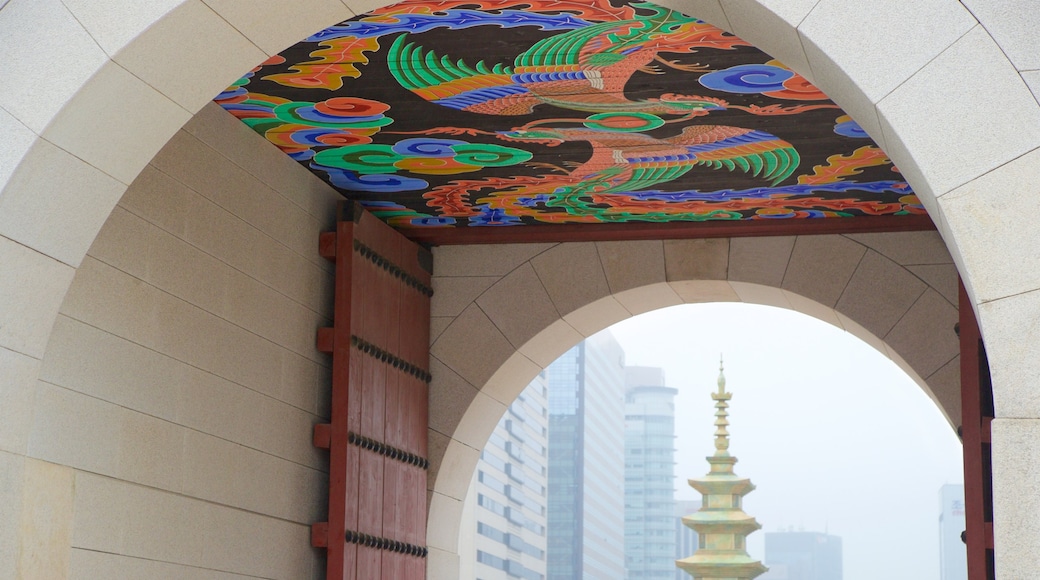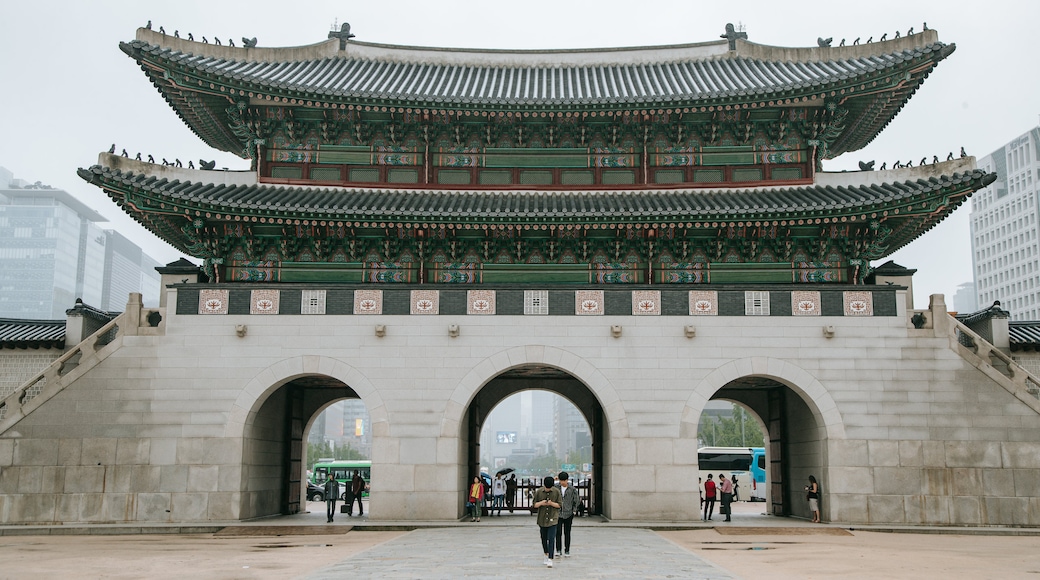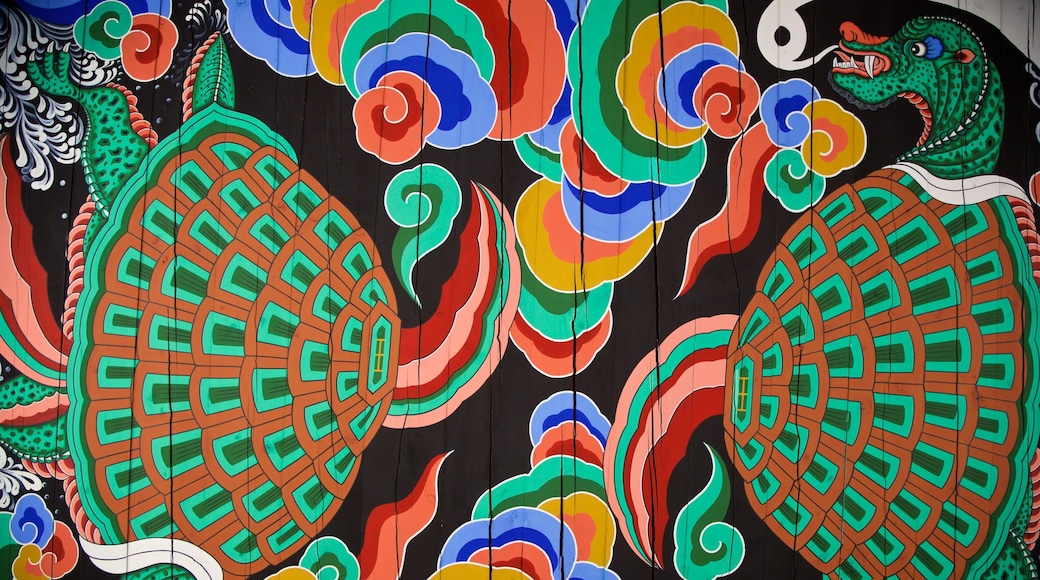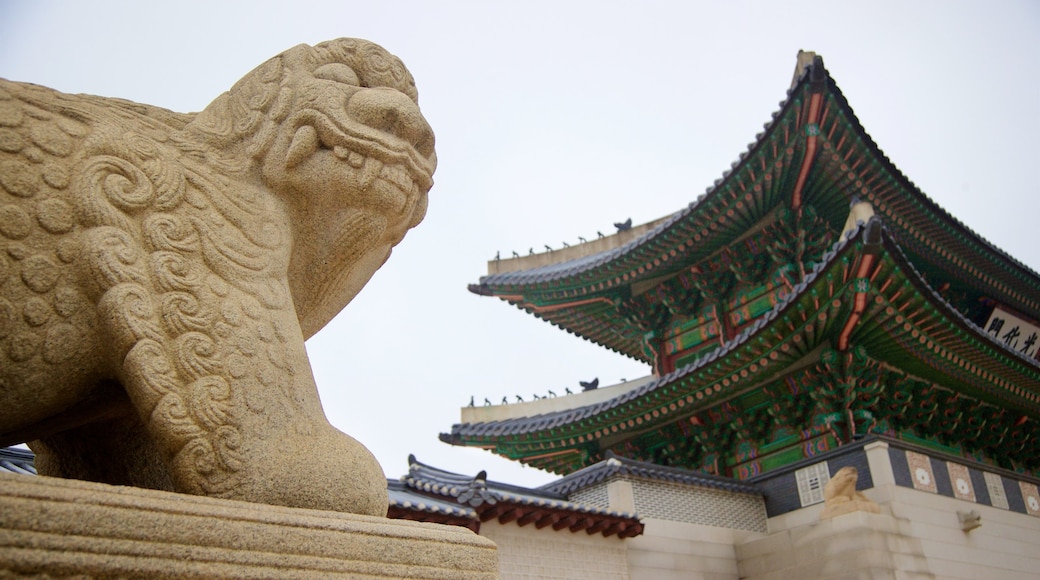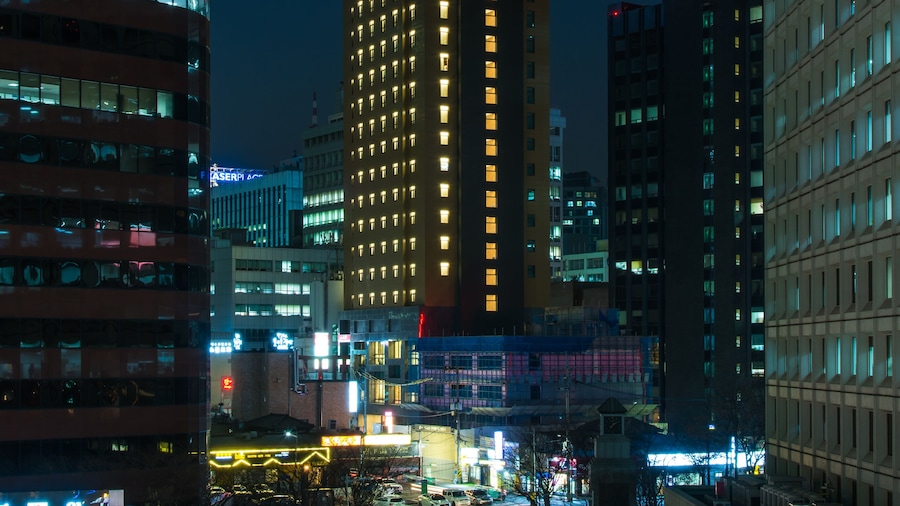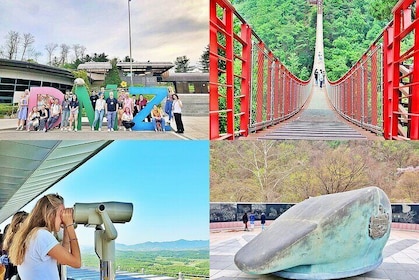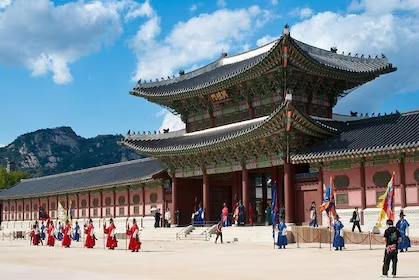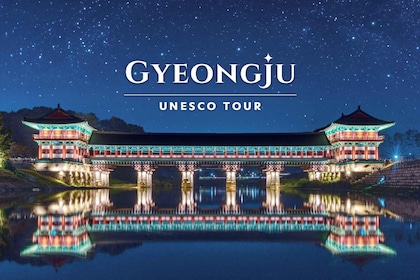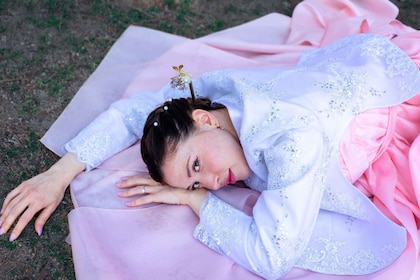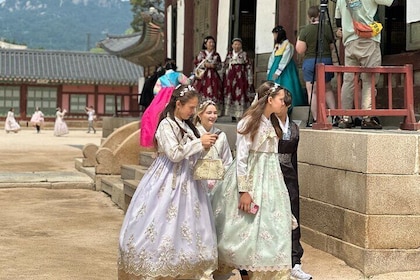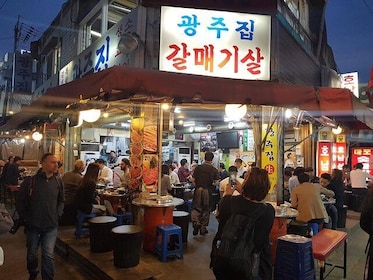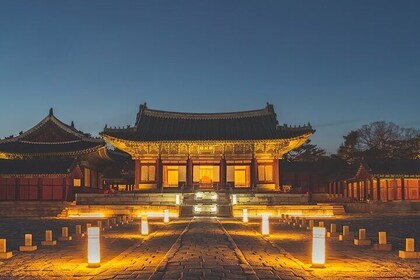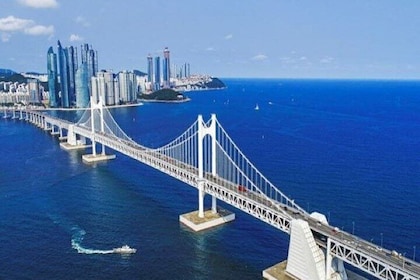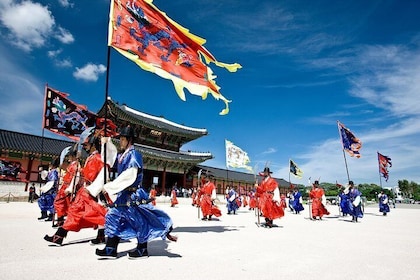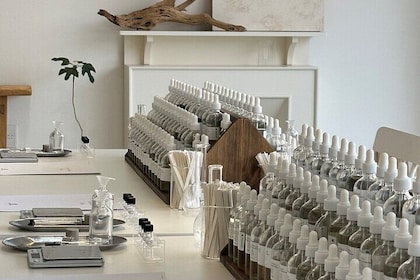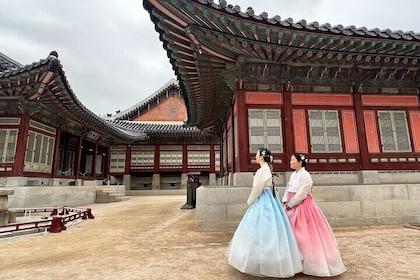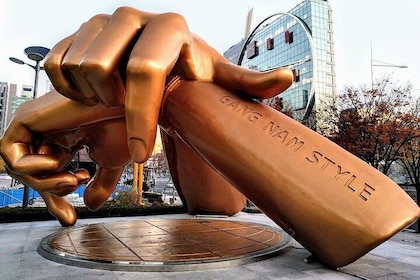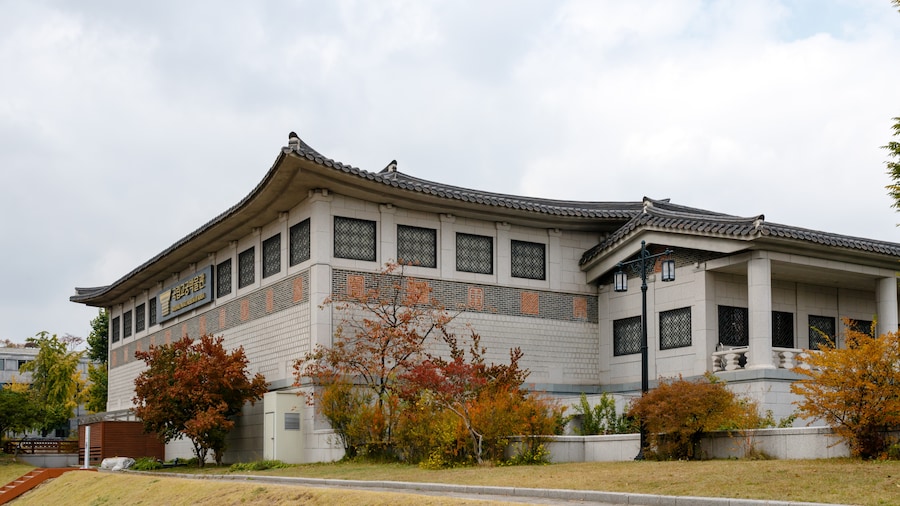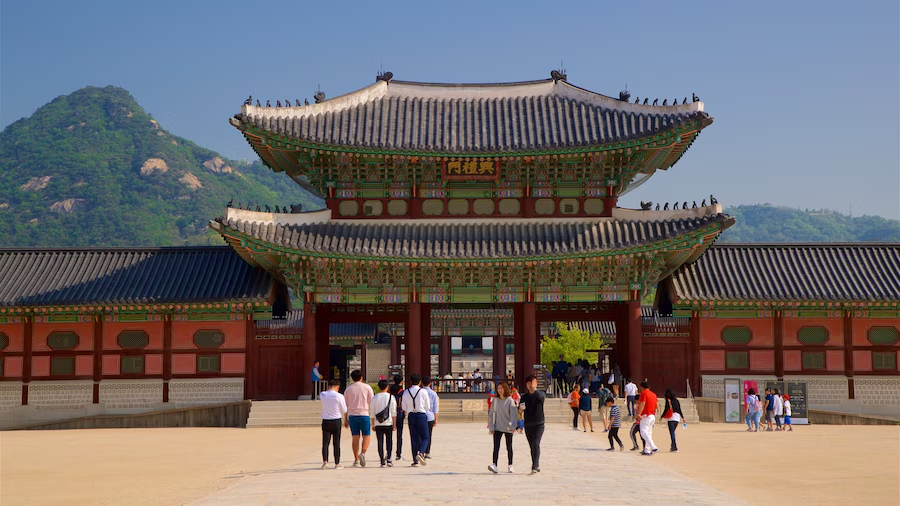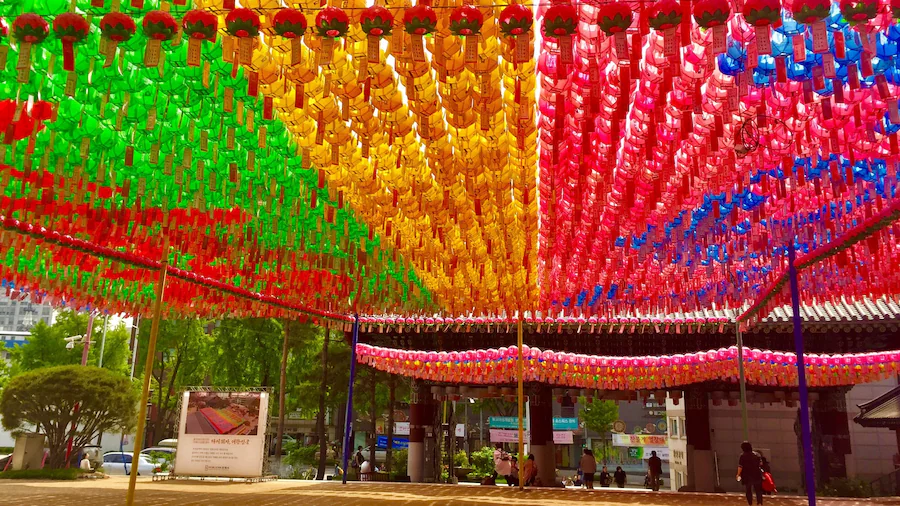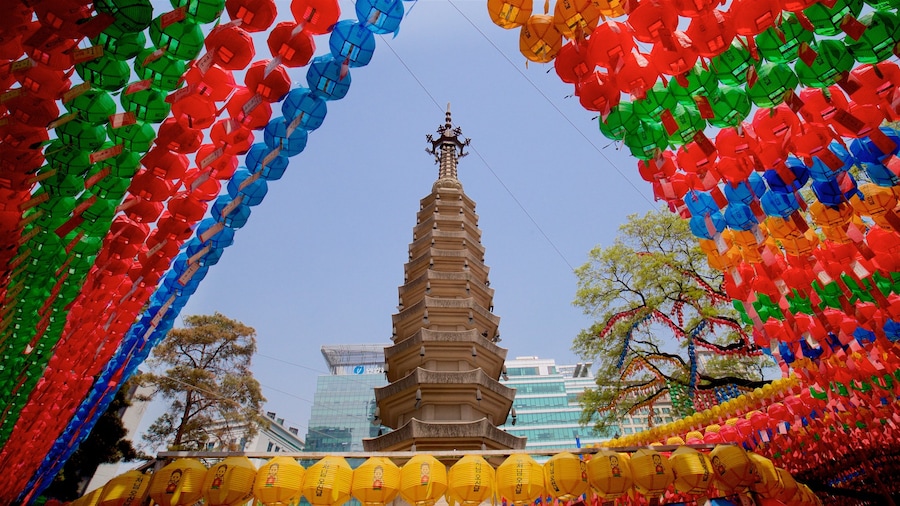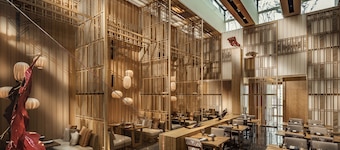Sense the magnetism of this place with its dynamic feeling of being at the heart of the country. This important area is historic as well as contemporary.
Gwanghwamun Square with its iconic gate provides instant immersion in the history and culture of the Korean peninsula. The area has much to offer for people of all ages. Even if the weather is not perfect, the place always presents a fascinating appearance. Statues, a palace, modern architecture and a distant mountain come together to provide a pleasant synergy.
In the center of Seoul, the square has a rather large area of about 5 acres (2 hectares). The space is divided into sections focusing on aspects of Korean life. Traditional architecture is featured in the section called Recovering the History of Gwanghwamun Gate Plaza with its iconic structure serving as an entrance to the space. Walk a little farther to the section Reenacting Yukjo Street Plaza where Seoul’s original main street is preserved in a scaled-down version.
Locate the seated statue of King Sejong the Great you’re now in the Korean Main Plaza. The Sejong Center for the Performing Arts and a statue of Admiral Yi Sun-sin mark the boundary of the Civil Participation Urban Culture Plaza with its art galleries and exhibition hall.
The Downtown Plaza attracts children and adults with its playful ground-level fountains under the admiral’s protective stance. Go under the statue to discover a museum about Sejong the Great who created the Korean alphabet called Hangul. The many battles of undefeated Admiral Yi Sun-sin are also described here.
This maritime country’s theme of water carries throughout the plaza. A stream flows under the square’s surface from Gyeongbokgung Palace at one end to the Cheonggyecheon Stream at the other. Walk along this waterway on the pleasant Cheonggyecheon Stream Connector with Seoul’s towering buildings on both sides.
Gwanghwamun opened in 2009. The pedestrian square often has events and public gatherings of particular importance to the country, particularly around the Admiral Yi Sun-sin statue.
